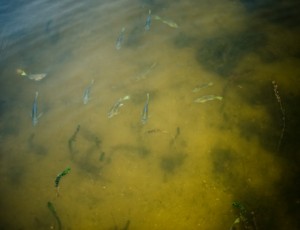View Source | September 9, 2014
 Commentary from John Sabo, sustainability scientist and director of research development at the Julie Ann Wrigley Global Institute of Sustainability, was recently featured in the Proceedings of the National Academies of Sciences. In the commentary, Sabo - whose work often investigates the effects of climate change on water ecosystems - breaks down research from Ohio State University scientist Kristen Jaeger and her colleagues.
Commentary from John Sabo, sustainability scientist and director of research development at the Julie Ann Wrigley Global Institute of Sustainability, was recently featured in the Proceedings of the National Academies of Sciences. In the commentary, Sabo - whose work often investigates the effects of climate change on water ecosystems - breaks down research from Ohio State University scientist Kristen Jaeger and her colleagues.
By incorporating knowledge on how fish move, Jaegar's team determined that - as sections of rivers diminish - it is increasingly likely that fish will be isolated by the dry patches and unable to move beyond them.
"This approach to measuring habitat fragmentation in intermittent rivers is the first of its kind and will be immediately relevant and extendable to rivers across the U.S. Sun Belt and in parts of the Corn Belt, where drought prevails regularly," notes Sabo in his commentary. "This paper is groundbreaking, not just because it achieves a great synthesis of climate, surface water hydrology and ecology, but also because it opens up possibilities for further innovation."

